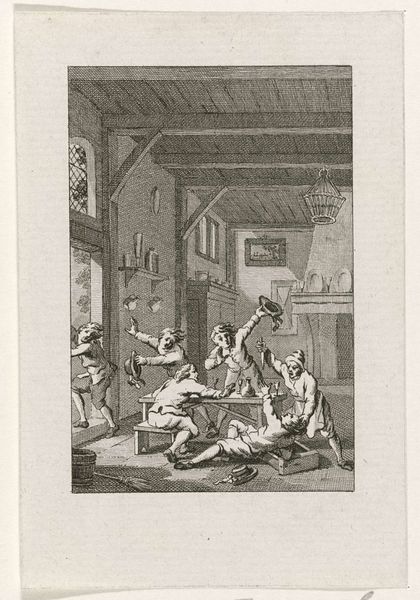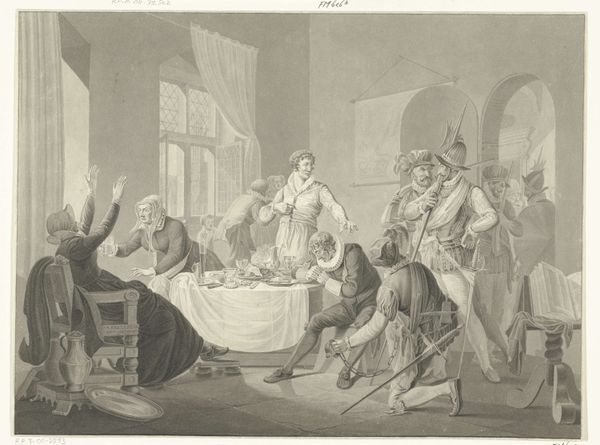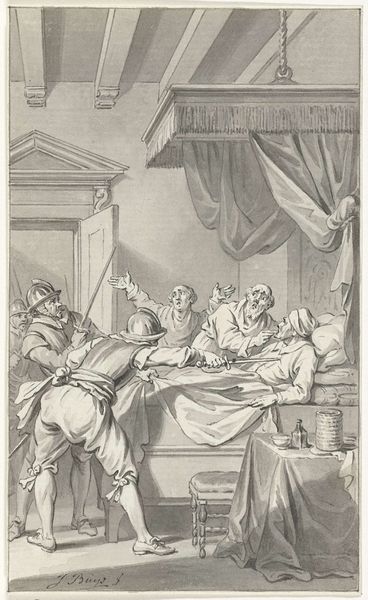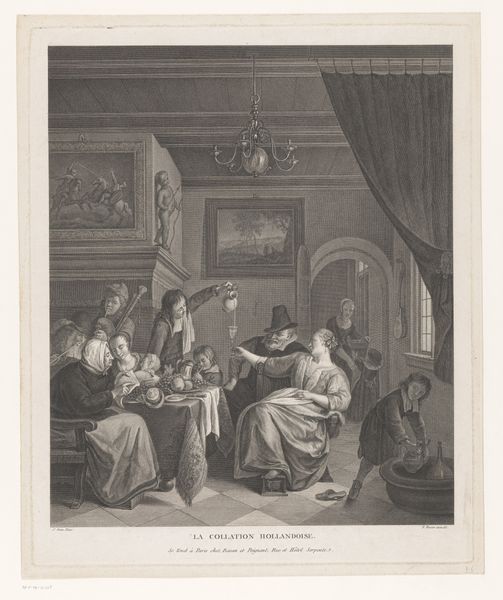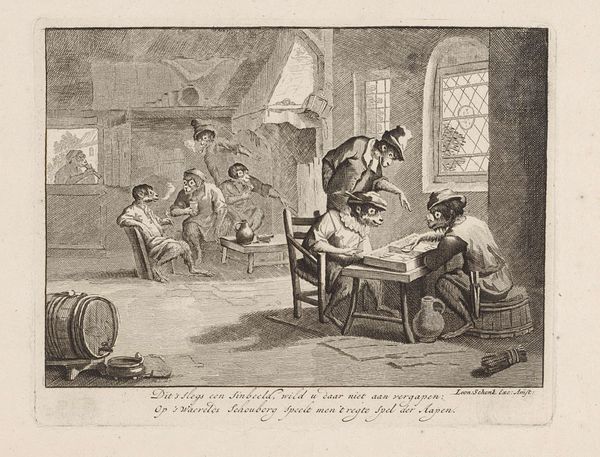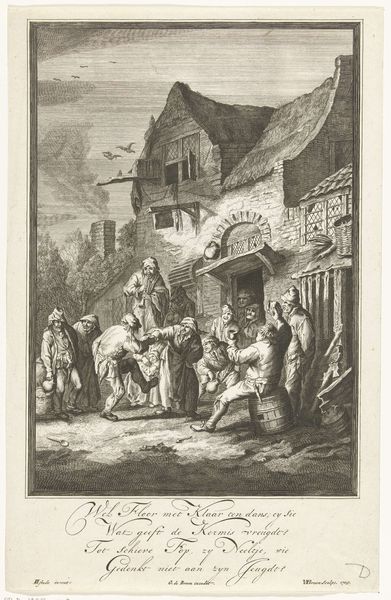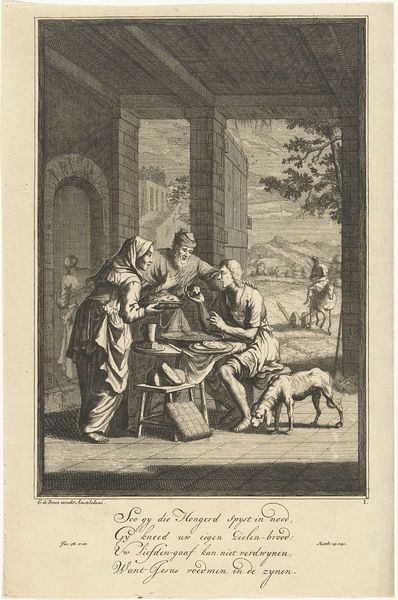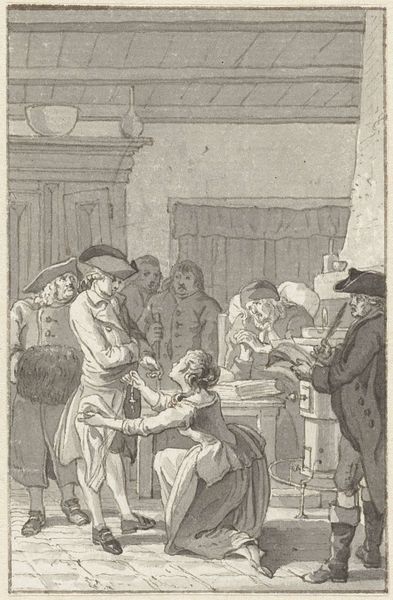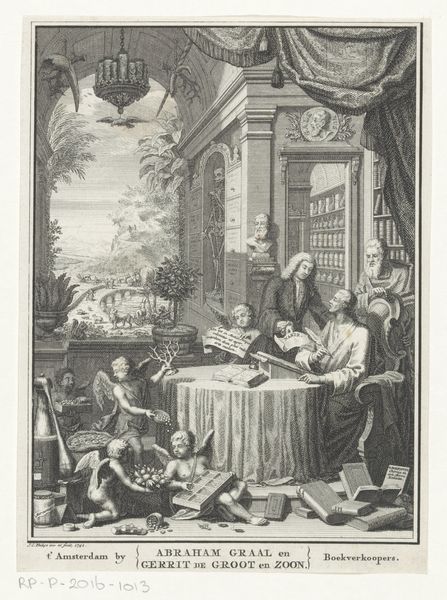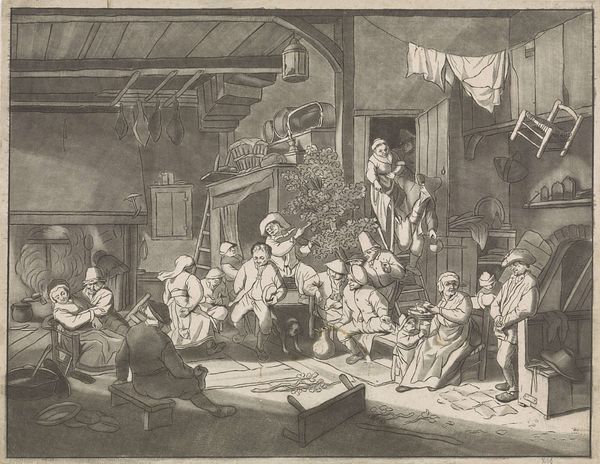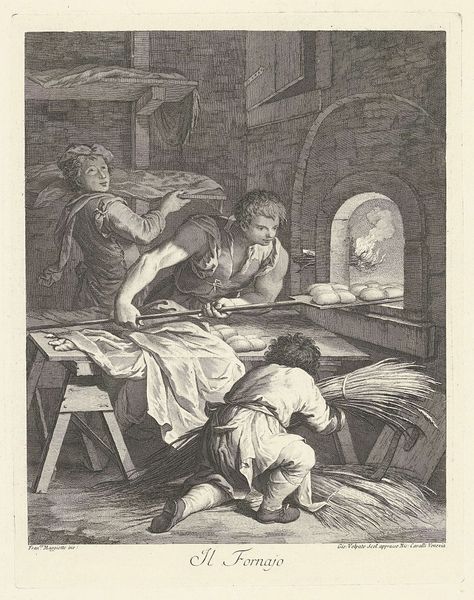
drawing, ink, pen
#
drawing
#
medieval
#
narrative-art
#
figuration
#
ink
#
romanticism
#
pen-ink sketch
#
pen
#
genre-painting
#
history-painting
#
realism
Dimensions: height 82 mm, width 56 mm
Copyright: Rijks Museum: Open Domain
Curator: My goodness, this scene just bursts with raw energy! I immediately feel caught up in a whirlwind of action; it’s utter chaos unfolding right before my eyes. Editor: Indeed. What we're observing here is "Fights with Orangists in Voorburg, 1787", an ink and pen drawing by Jacobus Buys that’s now held at the Rijksmuseum. It captures a charged moment in Dutch history. Curator: Political brawls, then? Not quite what I anticipated, gazing at this scene! You know, the swirling figures and frantic gestures give it such an intensely personal, almost dreamlike quality, even if the subject is violence. Editor: Well, these "Orangists" were supporters of the Stadtholder, William V, and in 1787, Patriots, who sought democratic reforms, clashed violently with them. It’s crucial to remember the late 18th century as a time of political upheaval, impacted deeply by enlightenment ideals and revolutionary sentiments. Curator: And it feels like Buys has almost choreographed the frenzy, guiding my eye around the scene, though there are some narrative ambiguities at work in his style. Is it too far-fetched to describe its spirit as, well, theatrical? Editor: I think your point touches on the constructed nature of historical representation. This image is more than just a recording of events; it’s a deliberate narrative choice, perhaps even imbued with the artist's political leaning, consciously or unconsciously. This connects to issues of representation, historical truth, and power, and these events are also viewed differently today than at the time the artwork was made. Curator: Representation is certainly key here! The way that light filters in is rather beautiful, though the subject is less than inspiring! I am particularly intrigued by that fallen figure in the front: a brilliant vignette! I suspect, this drawing possesses far more intrigue than initially meets the eye. Editor: Absolutely. Considering the layers of social tension simmering beneath the surface transforms how we view this historical snapshot; the seemingly innocuous interior is actually fraught with political implications. Curator: Yes! This work becomes not merely about what is depicted, but also about all of what is implied: it has something important to tell us, and a challenge to confront. Editor: Precisely. By unpacking that rich historical context, we gain a far more nuanced understanding of this pivotal period and the artistic responses it generated.
Comments
No comments
Be the first to comment and join the conversation on the ultimate creative platform.
